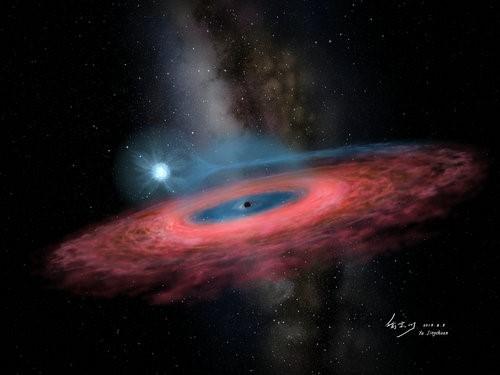When a black hole is simply too big
One of the distinguishing features of black holes is that they are hard to see. Astronomers looking for them sometimes have luck, but at the cost a star: when a ravenous black hole tears off and devours stellar material from an orbiting star, the resulting accretion disk emits radiation that can be measured. Almost all known black holes have been discovered this way.
But it seems logical that those aren’t the only ones out there. Black holes are formed when heavy stars die. And many of these giant stars die alone, without a companion that a resulting black hole could nibble on. Thus, presumably the known black holes represent just a selection – a selection that might not be representative in all aspects.
Chinese astronomers have now succeeded in finding a black hole the way planets are discovered: by its influence on the motion of a visible star. Here, the researchers bumped into a surprise that doesn’t fit nicely into current theories of star formation.
For two years, the astronomers tracked the motion of the blue subgiant LB-1, which is 15,000 light-years from Earth. At about eight solar masses and 35 million years old, the star is practically still a baby. After analyzing the data, the astronomers found that the star must have a rather old companion, a black hole with a mass equal to about 70 Suns. Both objects orbit their common center of mass once every approximately 79 days.
The problem here is the mass of the black hole. “Black holes of such mass should not even exist in our galaxy, according to most of the current models of stellar evolution,” says Prof. Liu Jifeng of the Chinese Academy of Sciences. “We thought that very massive stars with the chemical composition typical of our galaxy must shed most of their gas in powerful stellar winds, as they approach the end of their life. Therefore, they should not leave behind such a massive remnant. LB-1 is twice as massive as what we thought possible. Now theorists will have to take up the challenge of explaining its formation.”
In their article, the Chinese researchers also propose an idea: maybe the black hole with LB-1 is the combined remains of two giant stars and the still visible blue star had been the outermost part of the former triple star system. Or maybe there are actually two half-as-large black holes orbiting each other, and they only look like one from afar.
